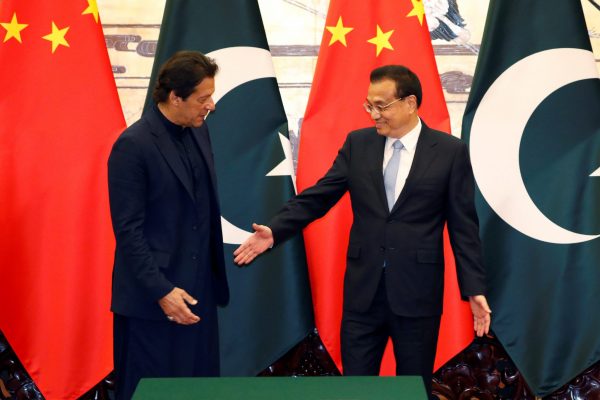China’s Support to Pakistan: Strategic Alliance or Political Move?
Introduction
Ever wondered why China and Pakistan are always seen holding hands in international politics? Well, their alliance isn’t just about being good neighbors—it’s deeply rooted in strategic calculations, shared interests, and a fair bit of political maneuvering. This powerful relationship raises an important question: Is it a genuine strategic partnership or just a smart political move by Beijing?
Let’s unpack it step-by-step.
Historical Background
The Birth of a Friendship
China and Pakistan officially established diplomatic ties in 1951, and since then, they’ve been pretty tight. Their relationship grew stronger during the Cold War, especially when both countries found themselves at odds with India and aligned against Soviet influence.
Cold War Chemistry
In the 1960s and 70s, Pakistan played the role of a bridge between China and the West, even facilitating US President Nixon’s historic visit to China. That was a big deal—and China hasn’t forgotten it.
Economic Cooperation
China-Pakistan Economic Corridor (CPEC)
Think of CPEC as the crown jewel of their relationship. It’s a $60+ billion project under China’s Belt and Road Initiative (BRI) aimed at connecting Gwadar Port in Pakistan to China’s Xinjiang region via highways, railroads, and pipelines.
This corridor isn’t just about trade; it’s a geostrategic game-changer. For China, it offers access to the Arabian Sea, bypassing the volatile South China Sea routes. For Pakistan, it’s a potential economic lifeline—though not without controversy.
Trade and Infrastructure Investments
China is Pakistan’s largest trade partner and investor. From highways to power plants, China has pumped billions into Pakistan. But here’s the catch: a lot of this investment is in the form of loans. That raises eyebrows about long-term sustainability.
Military and Defense Collaboration
Arms Deals and Joint Ventures
Pakistan’s military hardware—fighter jets, tanks, drones—you name it, much of it is either made in China or made with China. The JF-17 Thunder jet, co-produced by both nations, is a prime example of their close military partnership.
Joint Military Exercises
The two armies regularly hold joint drills. These aren’t just for show—they’re about aligning strategies, sharing tactics, and boosting mutual trust in a highly militarized region.
Strategic Motives Behind China’s Support
Countering Indian Influence
Let’s not sugarcoat it: China and India are rivals. Pakistan becomes a natural ally for China to put pressure on India. By supporting Pakistan, China is effectively keeping India engaged on multiple fronts.
Access to the Arabian Sea
Gwadar Port is a big deal. It gives China direct access to the Arabian Sea—cutting trade costs and boosting naval reach. It’s like owning a shortcut in the global shipping game.
Expanding China’s Global Influence
Pakistan is a major piece in the puzzle of China’s Belt and Road Initiative. Supporting Pakistan isn’t just regional—it’s global strategy in motion.
Political Dimensions
Support in International Forums
When Pakistan is in hot water, China often comes to the rescue—be it blocking UN resolutions or lobbying on its behalf at FATF. That’s not just friendship; that’s strategic diplomacy.
Use of Soft Power
Beyond politics and economics, China invests in cultural exchanges, educational programs, and Confucius Institutes in Pakistan. It’s all about winning hearts, not just minds.
Public Perception in Pakistan and China
While leaders on both sides hail the “Iron Brotherhood,” public sentiment is mixed. Many Pakistanis appreciate Chinese investments but worry about sovereignty. Similarly, many Chinese are indifferent about Pakistan, seeing it as a lesser economic player.
Criticisms and Concerns
Debt Trap Diplomacy
Critics argue that CPEC might push Pakistan into a debt trap—unable to repay the massive Chinese loans. While the Pakistani government denies this, the numbers are hard to ignore.
Sovereignty and Overdependence
In some regions of Pakistan, particularly Balochistan, there’s resentment toward Chinese presence. Locals fear exploitation of resources and marginalization.
Comparison with China’s Other Regional Ties
Compared to its relationships with Bangladesh, Nepal, or Sri Lanka, China’s support for Pakistan is far more intense and consistent. This is less about regional friendship and more about shared interests in containing Indian and Western influence.
US and Western Perspective
The US and its allies view China-Pakistan relations with skepticism. Washington worries about the strategic imbalance it creates in South Asia and the growing Chinese footprint near critical trade routes.
Future of the China-Pakistan Alliance
What’s next? Expect deeper military cooperation, expanded trade, and greater diplomatic alignment. But Pakistan must tread carefully to avoid becoming overly dependent on Beijing—and losing its say in its own affairs.
Conclusion
So, is China’s support to Pakistan a strategic alliance or just a clever political move? Truth is—it’s both. It’s a marriage of convenience rooted in shared interests, but it comes with its own baggage. While Pakistan gains much-needed investment and support, China secures a loyal ally in a geopolitically sensitive region. Whether this relationship will remain balanced or tilt into dependency is something only time will tell.
FAQs
1. What is the China-Pakistan Economic Corridor (CPEC)?
CPEC is a multi-billion-dollar infrastructure project aimed at connecting Pakistan’s Gwadar Port to China’s western region via roads, railways, and pipelines.
2. Why does China support Pakistan diplomatically?
China supports Pakistan to counterbalance India’s influence, secure regional alliances, and expand its own global footprint, especially through initiatives like the Belt and Road.
3. Is CPEC beneficial for Pakistan?
While CPEC offers infrastructure development and economic opportunities, critics argue it may increase debt and limit Pakistan’s economic autonomy.
4. What is the role of Gwadar Port in China-Pakistan ties?
Gwadar provides China strategic access to the Arabian Sea, offering an alternative trade route and a potential naval foothold in the region.
5. How does India view the China-Pakistan alliance?
India sees the alliance as a strategic threat, especially due to military collaboration and CPEC projects passing through contested regions like Gilgit-Baltistan.
Digital Marketing, Best Digital Marketing Services, SEO Services, Website Design and Development, Pay-Per-Click (PPC) Advertising, Social Media Marketing (SMM), E-Commerce Services
Follow Us: Quora, Facebook, Instagram, Twitter




